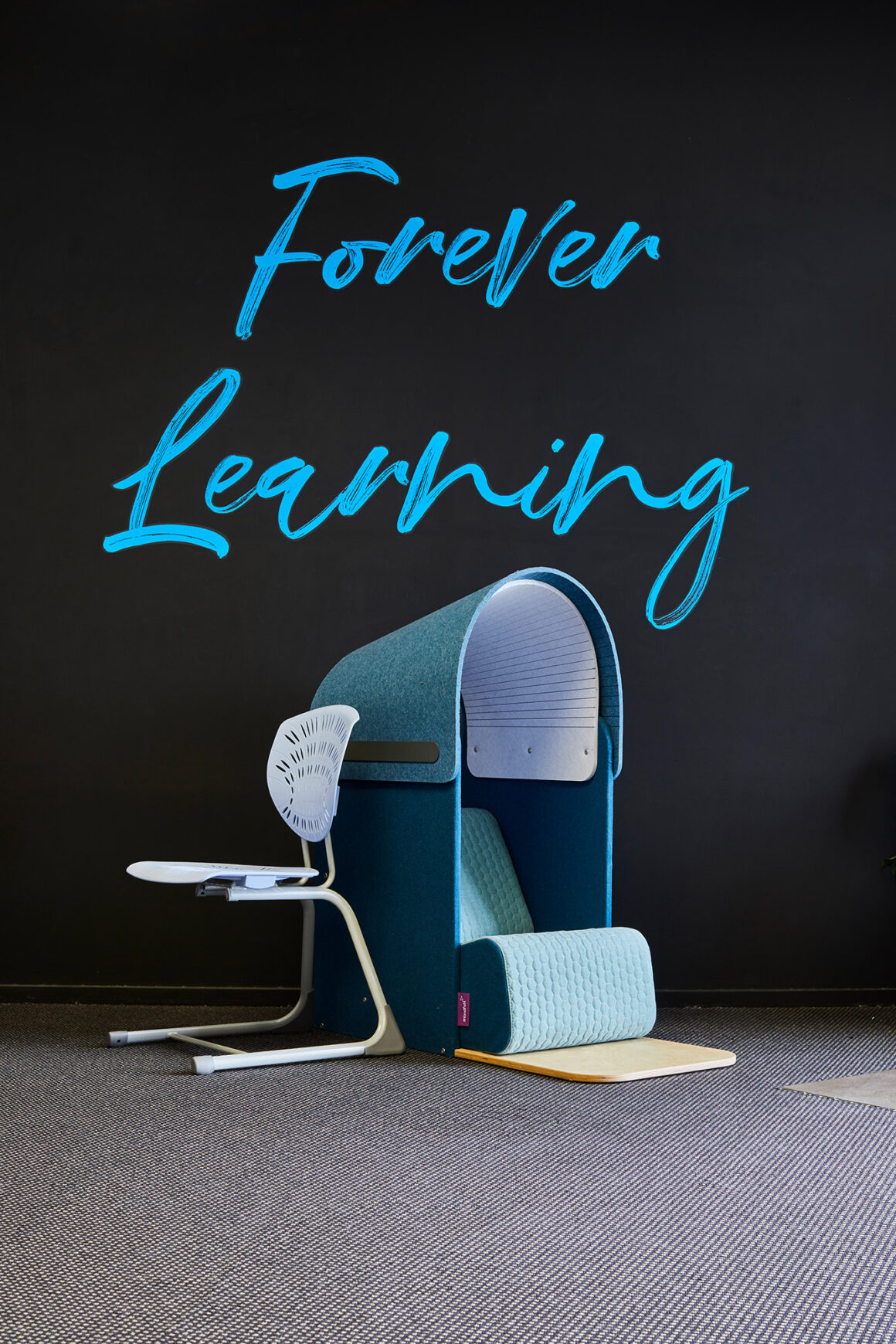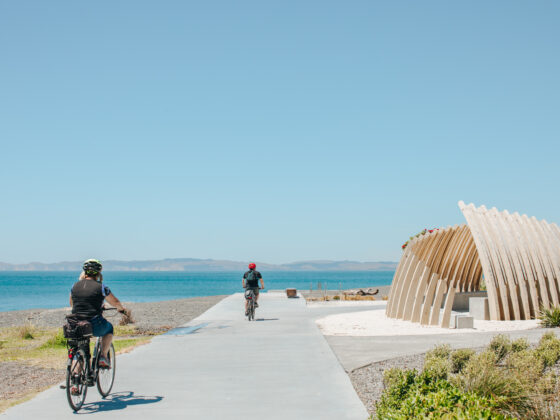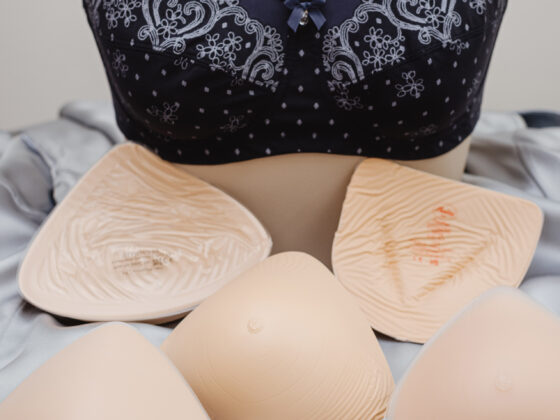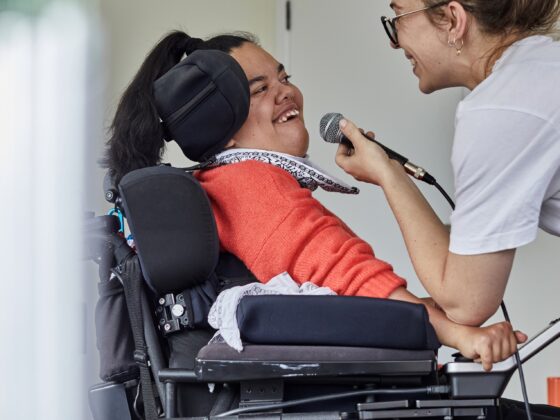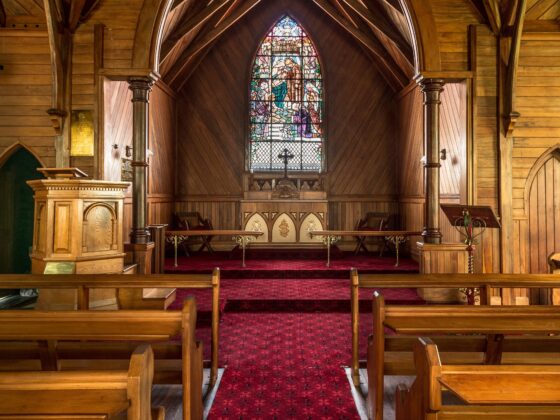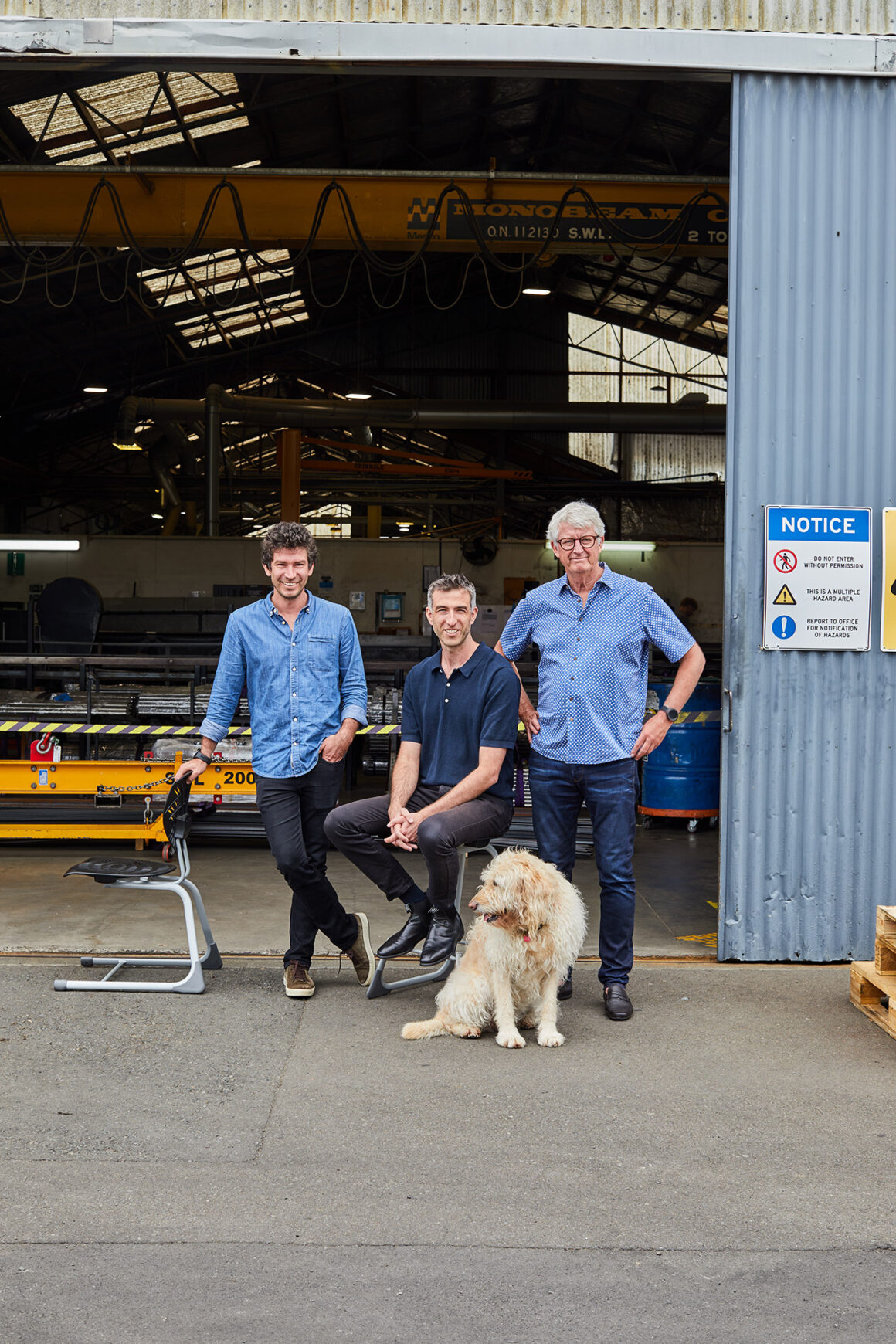
Do you remember as a child that numb feeling in your bottom and legs from sitting too long in class, or the scratches on the back of your thighs from the slivers of wood that pierced your skin as you slid off your chair? David takes you back to those school days of wriggling in your seat and walks us through the welcome improvements in ergonomics that began in Hastings and have spread worldwide.

Ah, the humble school desk and chair – stalwarts of the classroom, silent witnesses to generations of students’ triumphs, doodles, ink smears, compass carvings and the occasional clandestine chewing gum deposit.
The hinged top desks that allowed you to momentarily hide your face from the teacher while prematurely starting on your lunch. The steel-pipe-legged chairs that would on occasion get slightly bent making your chair more like a seesaw.
Let’s embark on a light-hearted journey through the evolution of these educational essentials in New Zealand over the past century.
The Early 20th Century: A Solid Start In the early 1900s, New Zealand classrooms were furnished with sturdy wooden desks, often equipped with inkwells – those quaint reservoirs that held ink for dip pens. These desks were typically long and shared, promoting a sense of camaraderie (and perhaps a few elbow jabs) among students. The accompanying bench seats were equally robust, designed more for durability than comfort.
Mid-20th Century: A Shift Towards Individuality As the decades rolled on, educational philosophies began to emphasise individual learning. This shift was mirrored in classroom furniture, with the introduction of single-student desks. These desks often featured lift-up lids, providing storage space for books, pens and the occasional contraband comic. The inkwell holes remained, though they were increasingly becoming relics as fountain pens and ballpoints gained popularity.

The 1970s: Ergonomics Enters the Scene
The 1970s brought with it the awareness of ergonomics, not just in offices but in schools as well. At the forefront of this revolution was a Hastings company – Furnware.
They started by asking a simple question, “Could a welldesigned ergonomic chair enhance concentration and learning in the classroom?”, then set about researching, through visiting schools, observing behaviours in the classroom and talking to many thousands of Kiwi students. Their conclusions, echoed by educators and designers, indicated that traditional school chairs inhibited movement and restricted blood flow, resulting in unproductive fidgeting and loss of focus in the classroom.
The 21st Century: A Revolution in Comfort and Flexibility
Up until this time the only significant changes were based on materials, swapping wooden-legged chairs with metal pipe frames. Changes then extended to replacing wooden seats and backs with hard plastics, which at least did allow for some colour options to enter the classroom design.
Nowadays, not only New Zealand schools have embraced a revolution in classroom furniture design. A global focus has shifted towards creating dynamic, flexible learning environments that cater to diverse student needs.
Ergonomically designed chairs and desks are now the norm, promoting better posture, comfort and concentration, thereby enabling enhanced learning outcomes. Furnware now manufacture and supply their award-winning Bodyfurn® system to millions of students throughout thousands of schools worldwide.
Hamish Whyte, owner of Furnware, said there came a time when they needed to design a school chair that offered students the best chance to concentrate, with maximum ergonomic comfort. Furnware developers and designers took on the challenge, researched and analysed thousands of children in the classroom setting, and from there the evolutionary Bodyfurn® system was developed – the world’s first dynamic seating solution that offered the right support without restricting circulation, keeping students comfortable. “Originally the business, starting in the ’30s, sold items such as wooden furniture, coffins and caravans. The original name, ‘Furniture & Woodware’, was later rebranded to ‘Furnware’,” says Hamish.
Furnware is part of the family-owned Resero Group, employing over 250 people around the world. They design and build most of their furniture at their base in Hawke’s Bay.

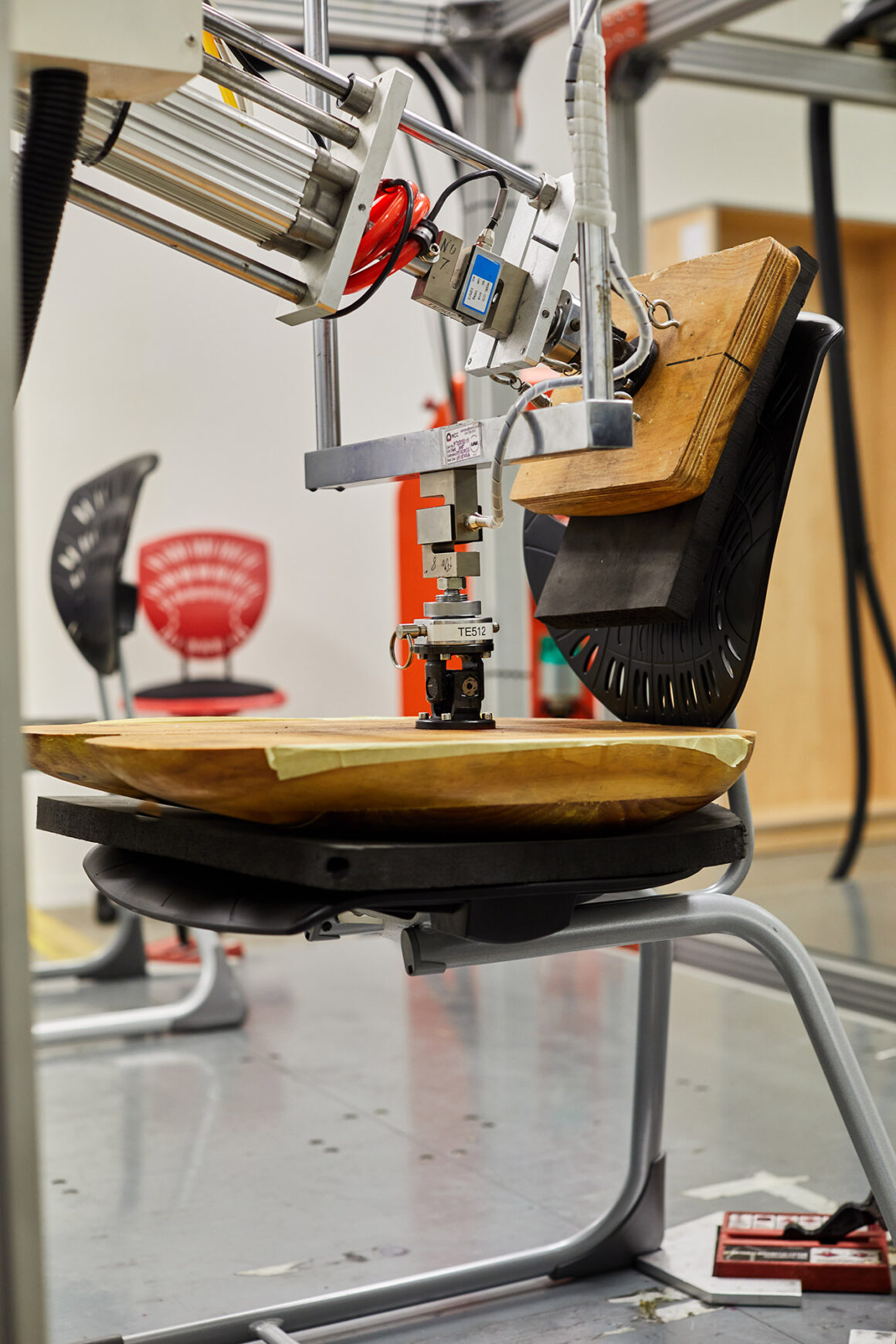
“Sustainability is at the heart of what we do,” says Hamish. The new Bodyfurn® Flex product is made from post-consumer recycled (PCR) materials and is seen to be a major step forward. The company is actively working toward creating a fully circular economy. “Success is measured by reducing waste, reusing materials and ensuring our products are durable enough to stand the test of time in classrooms around the world.”
Inspiring Visuals
The latest edition from the Furnware team is a fabric design collaboration with local Māori artist Jacob Scott. Jacob lives in the Hawke’s Bay and is of Ngāti Kahungunu, Te Arawa and Ngāti Raukawa descent.
Jacob is recognised as a pioneer in contemporary Māori art and Māori arts education. He founded and was Head of the Eastern Institute of Technology’s Art & Design School and led the development, accreditation and establishment of the Maunga Kura Toi Degree – New Zealand’s first degree-level programme in whakairo, raranga, and rauangi, and also the Awatoru master’s degree programme.
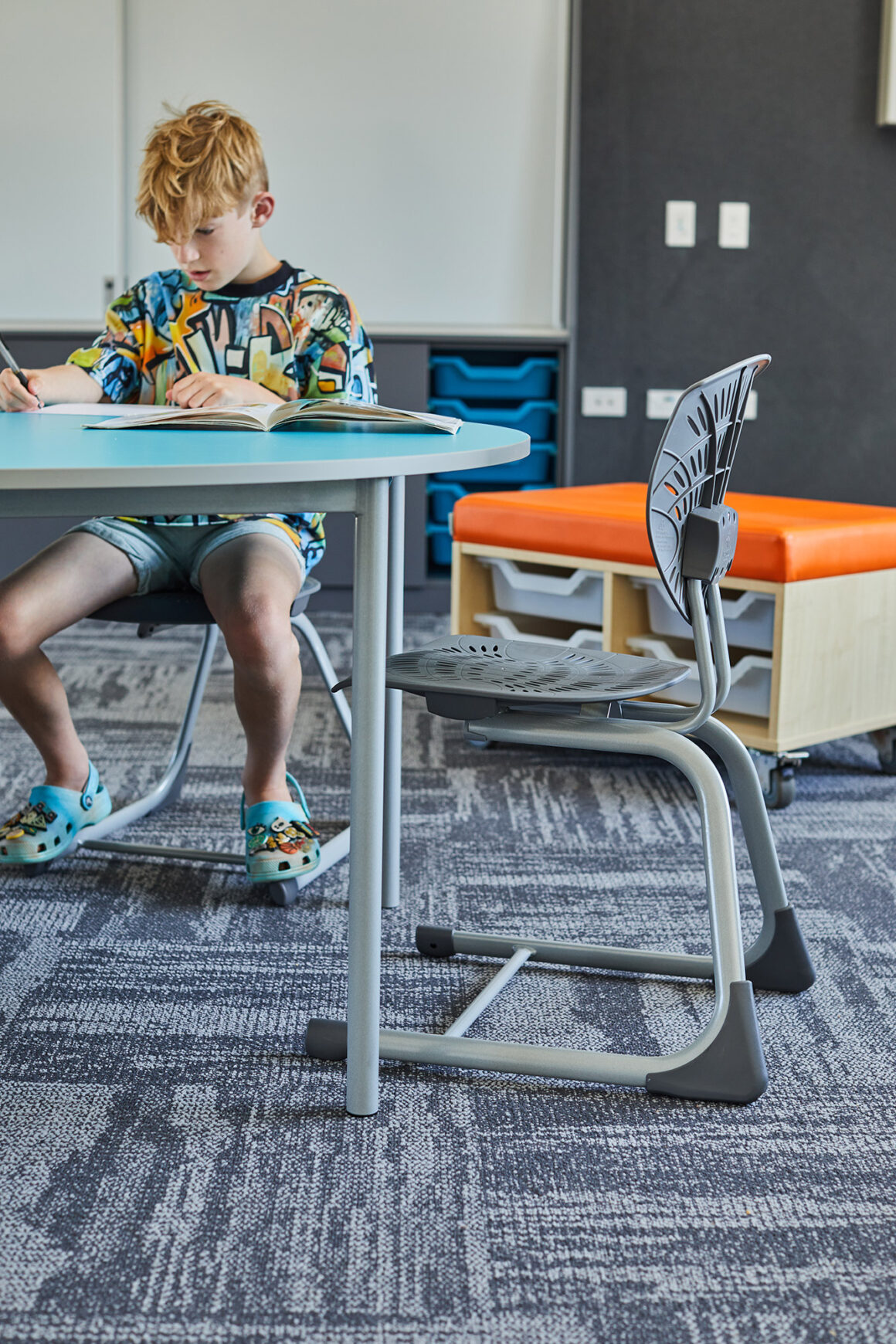
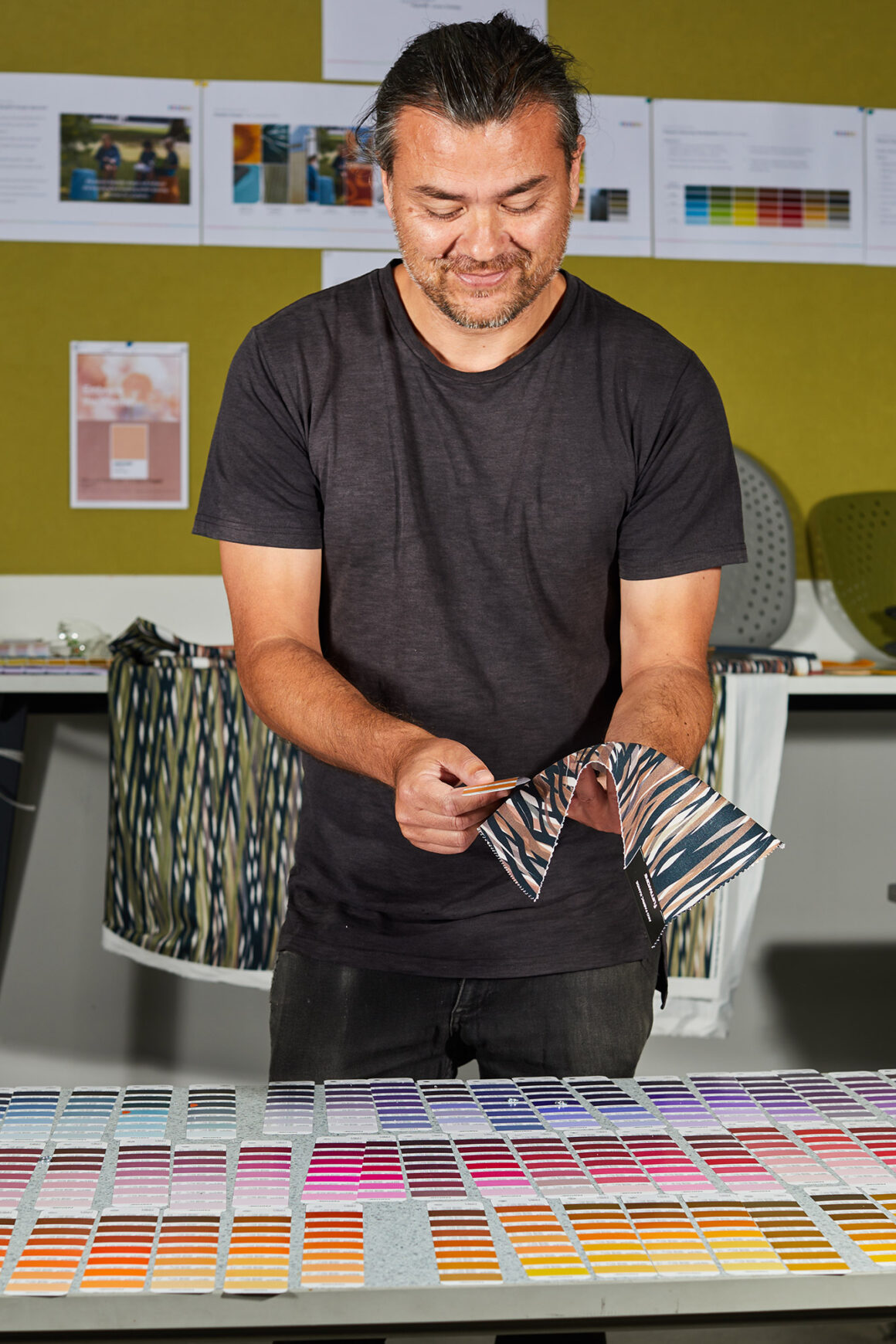
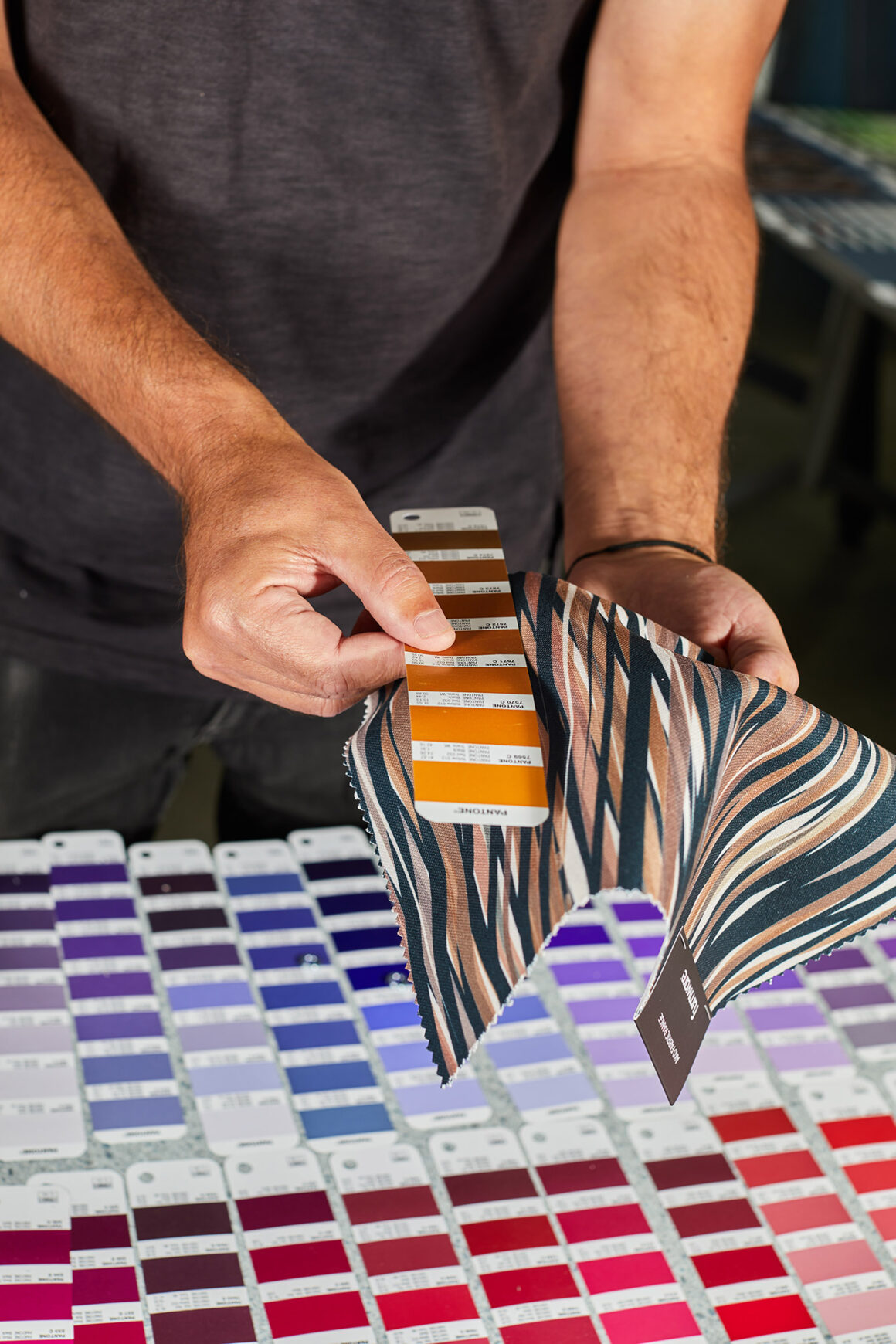
The collaboration, called Ako, drew inspiration from the rich cultural elements of Māori art and Aotearoa’s spirit of boldness and ingenuity. This included combining Jacob’s artistic talent and creative input with the technical knowledge and design expertise of our own Furnware product design team. The Ako range
of fabric designs were created to honour Māoritanga while embracing innovation and evolving traditions for future generations. Ako means to learn, study, instruct, teach and advise, embracing the concept of reciprocal learning through shared experiences.
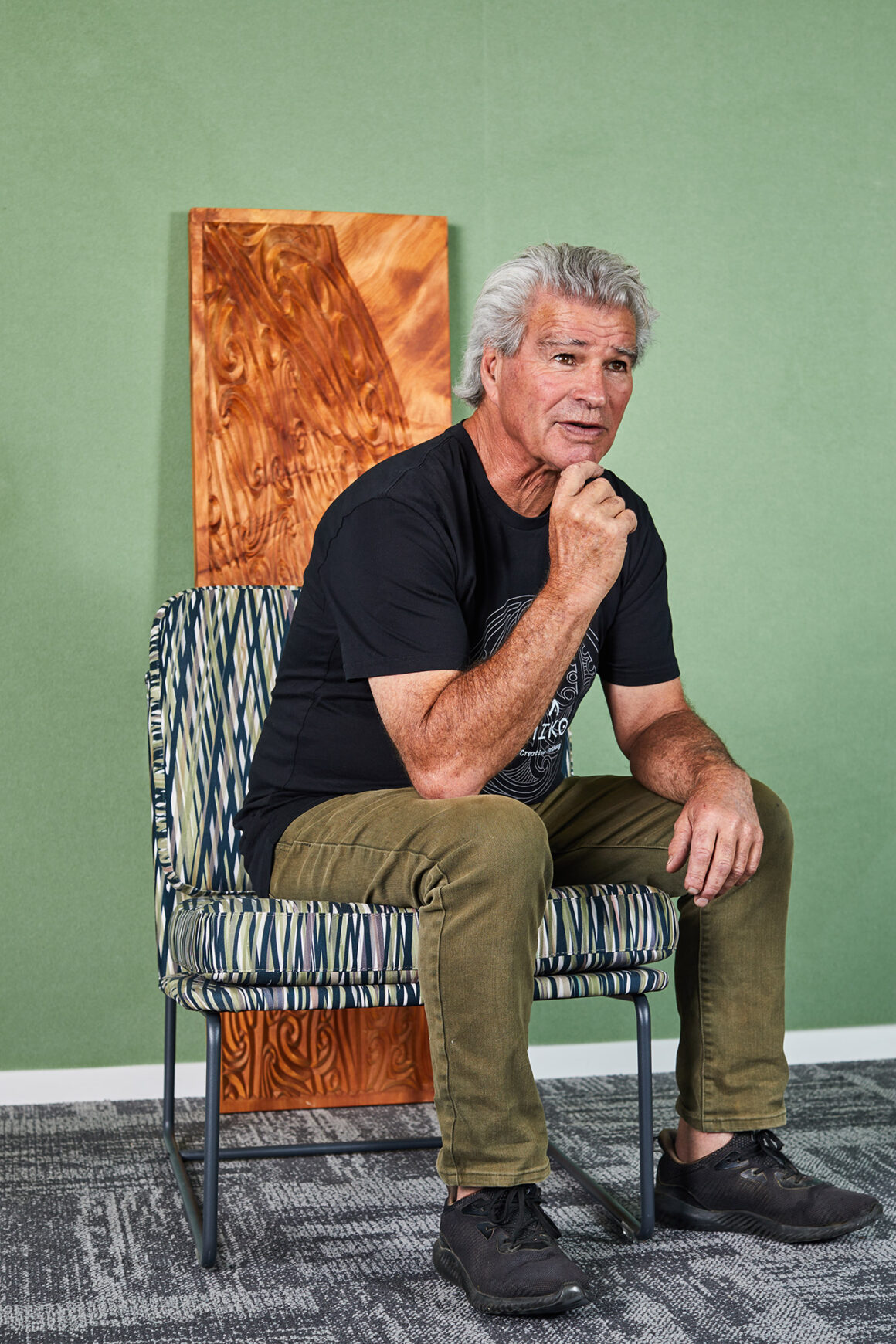
Artist, Jacob Scott
From Rigid Rows to Flexible Spaces
The evolution of school desks and chairs in New Zealand reflects broader changes in educational philosophies and societal values. From the rigid, uniform rows of wooden desks with inkwells to the flexible, studentcentred learning environments of today, classroom furniture has continually adapted to support the needs of learners.
As we look to the future, one can only imagine what innovations await – perhaps holographic desks or chairs that adjust themselves based on a student’s mood. Whatever comes next, it’s clear that the quest for the perfect learning environment is as dynamic as education itself.

